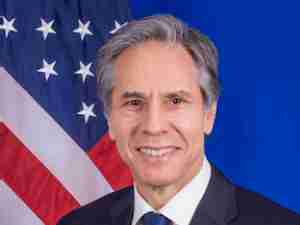Japan Inc. hopes to gain a competitive edge with the plan, including expanding scope for a government-backed agency to offer long-term loans to firms, but analysts see a tough road ahead for Japan, already behind countries like South Korea and France.
For now, Japan's government is targeting nuclear power plants and high-speed railway projects abroad, but it is looking into other areas such as water and coal-fired power projects.
To beef up diplomatic efforts to pitch Japan's technology abroad, Transport Minister Seiji Maehara will make a three-day visit to the United States from Thursday to promote Japan's high-speed railway systems.
He will be accompanied by top executives from Kawasaki Heavy, Central Japan Railway Co (JR Tokai), and East Japan Railway, whose competitors include industry giants such as Canada's Bombardier, Germany's Siemens and France's Alstom.
"I would like to pitch our high-speed train systems, which will be supported by 'all Japan' efforts of public-private partnership," Maehara told reporters.
Maehara noted Japan's shinkansen bullet trains have had no fatal accidents since they started operating in 1964 and their average delay over the past 45 years was less than a minute.
He would also contend shinkansen's lighter rolling stock makes running costs lower, keeping the train systems more energy efficient and environment friendly than its rivals, Maehara said.
The government's plan, expected to be a key pillar in Japan's growth strategy to be finalised in June, also includes steps to help set up infrastructure funds for overseas projects and the use of export insurance to cover risks-associated policy changes.
The move comes after Japan lost face in an unsuccessful bid for a nuclear power plant project in the United Arab Emirates, which was won by a South Korean low-cost government-backed offer.
Prime Minister Yukio Hatoyama's government has vowed to boost domestic demand for growth. But with a limited scope for that approach due to a rapidly ageing society, it realises the need to rely on exports, including tapping the global infrastructure investment demand, estimated by Morgan Stanley at a cumulative $41 trillion by 2030.
Merely Catching Up
As a key measure in the strategy, the government enabled the Japan Bank for International Cooperation (JBIC) to provide long-term low-interest loans for high-speed railway projects in advanced economies, not just in developing nations.
In the case of industrialised nations, the state-backed JBIC had only been allowed to lend for nuclear power plant projects.
"After the Lehman shock, we thought about different kinds of growth strategy or stimulus steps. Seeking infrastructure projects abroad, both in developing and developed countries, was seen as a means of survival for many companies," he said.
But the JBIC step merely puts Japan Inc. on an equal footing with foreign competitors by getting rid of an obstacle Japan uniquely had, said Toyoaki Fujita, head of JBIC's policy and strategy department for financial operations.
Other countries like France and South Korea have won bids by packaging the offer to include everything from educating local workers, providing consultants, to taking care of security, in addition to building infrastructure and managing projects.
Japan seeks to catch up with them, with a slogan of "all Japan" efforts to offer comprehensive packages -- a move that could revisit Japan's traditional compartmentalised corporate structures that have made it hard to have 'one voice' for Japan.
But to win bids more efficiently, some analysts said Japan should be open minded about working with foreign firms in its consortiums despite its 'all Japan' campaign.
The question also remains how far Japan would go to compete with low-cost projects offer








